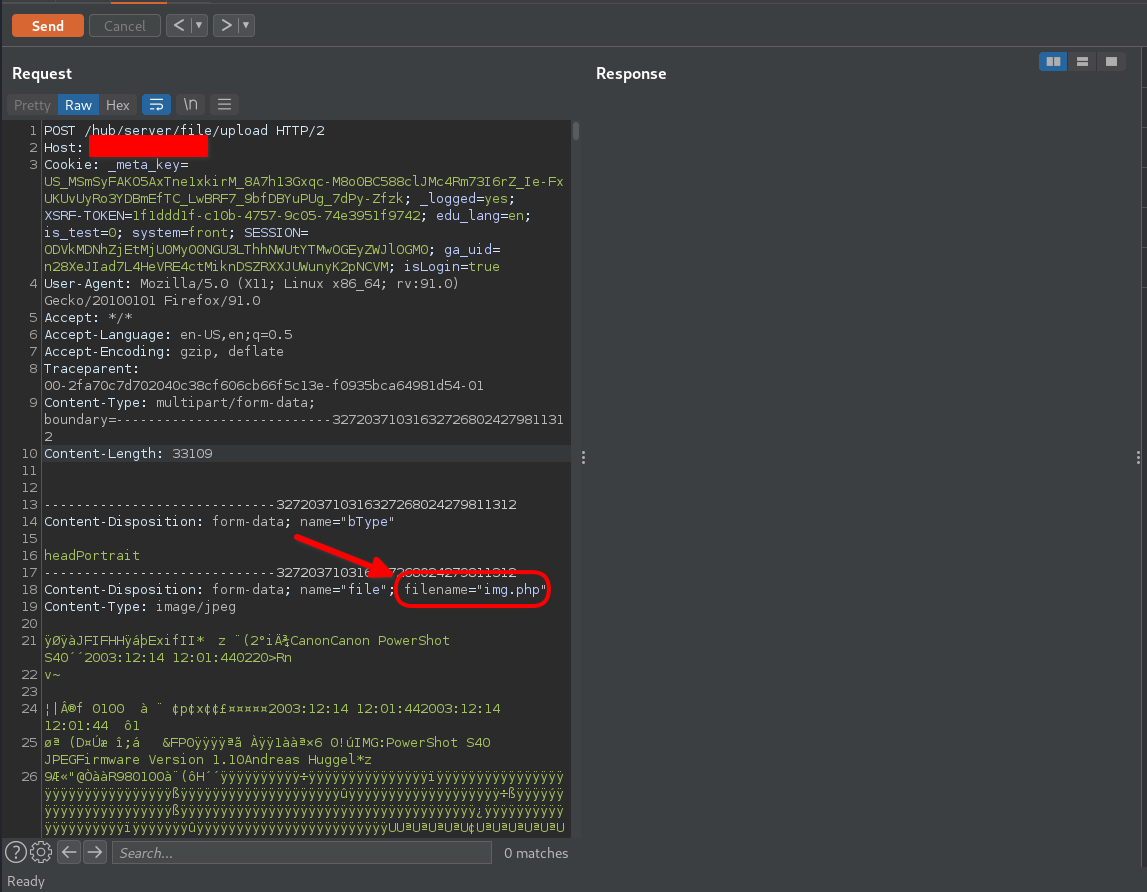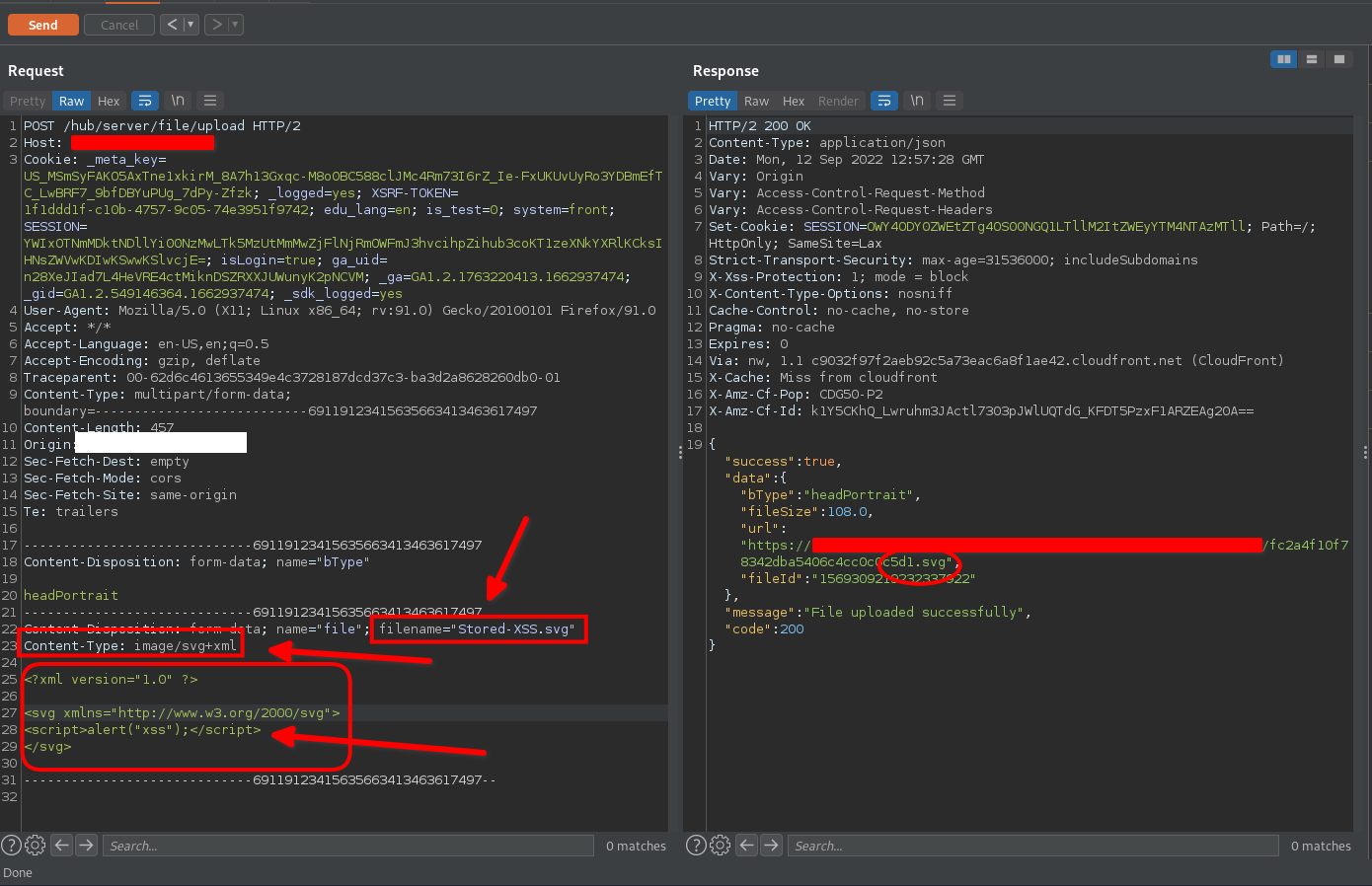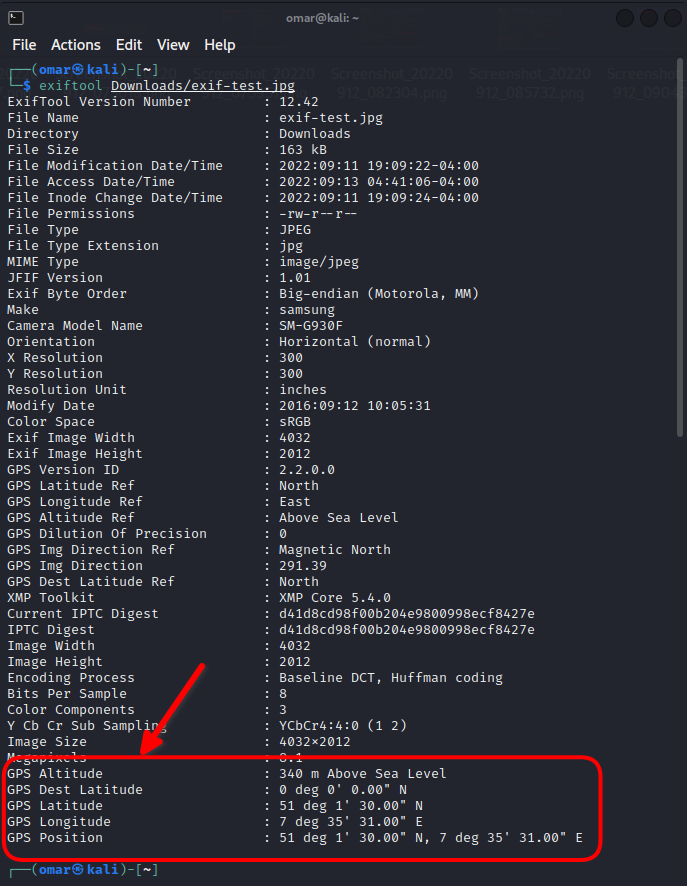
2022-9-19 20:36:52 Author: infosecwriteups.com(查看原文) 阅读量:22 收藏
Hello everyone, one of the most interesting functions is file uploading, vulnerabilities in file uploads usually lead you to critical or high-severity, so let’s start with this scenario that i faced while bug bunting

Let’s consider our target domain is target.com
While hunting on our target i came across the subdomain edu.target.com the service provided by the program is a teaching platform as there are different types of users like students and teachers who aim to help students to learn tech-related topics like software engineering robotics etc…
I came across the upload function trying to upload an image to analyze how the function works

let’s try to upload PHP script

i found that server didn’t respond
after some analysis of the application behavior, i figured out that if the request didn’t pass the validation the connection will be closed and the server will not respond to the request
Now let’s try to bypass the validation on the php extension
let’s start by figuring if the application is doing white or black list validation by trying to upload a random extension if it is uploaded successfully that means the application doing a black list if not it means that application doing white list validation for specific extensions
i tried to upload image.omar

The file was uploaded successfully which means the application doing black list validation
So i tried to bypass the validation using rce.pHp

It uploaded successfully
At this time I was expecting a $5000 bounty to be in my bank account in a few days
So let’s request our PHP script to execute phpinfo() function

The rce.pHp doesn’t executed
so what came to my mind at that time was that it seems like we were able to bypass the black list validation but developers follow a secure design that prevents me from getting RCE
and this can happen in several ways one of them is by adding this flag to the .htaccess file which will make the server not execute PHP files on the image upload directory
php_flag engine off
In case you don’t know what is .htaccess file
Note:
.htaccess file is distributed configuration files provide a way to make server configuration changes on a per-directory basis which i was expecting that developers uses it on image upload directory to prevent the RCE
So according to this, it came to my mind 2 scenarios
First Scenario:
Note: let’s assume that the endpoint of my image is:
https://target-domain.com/edu/sub-dir-1/sub-dir-2/sub-dir-3/our-image-here
1.1
Maybe developers uploaded their “.htaccess” file on sub-dir-1/ directory so according to this the sub-dir-1/ directory and subdirectories including the directory where i upload my php script can’t run php scripts so we can exploit this misconfiguration by uploading different “.htaccess” file on sub-dir-1/sub-dir-2/sub-dir-3/.htaccess with this configuration which will allow me to change the configuration on sub-dir-3/ which allow me to execute php script
The configuration that will allow running php script
php_flag engine on
1.2
Okay maybe developers doesn’t make this misconfiguration and already uploaded .htaccess file on my directory sub-dir-1/sub-dir-2/sub-dir-3/.htaccess at this case i will rewrite .htaccess file by uploading filename .htaccess with the previous configuration which will allow me to execute php script
But unfortunately, i remembered that the file name is rewritten so in case we uploaded the .htaccess will be rewritten to /sub-dir-1/sub-dir-2/sub-dir-3/32-random-characters.htaccess which will have no effect on the server configuration
Second Scenario:
2.0
In the second scenario, we will test it in case the first scenario failed by doing path traversal on filename parameter to get out from the directory that contains the .htaccess file that prevents my php script from executed so my file will be uploaded to another directory, not under the configuration that prevents php scripts from executed https://target-domain.com/edu/edu/32-random-chars.pHp
As you know that developers take an extension from the filename and put it in the endpoint extension so maybe developers use weak regular expressions that take whatever after the dot and put it in the endpoint extension so we can bypass it by adding a dot (.) then use path traversal payload to upload our script to another directory

Didn’t work because as you see it seems that developers implement regular expression validation in the right way (that in case they were using it and not using built-in function like php function pathinfo() )
Developers when uploading our images need to connect every image with its user
So how they can do that?
Correct, using database
As you see the developers save our filename parameter somewhere too

So the next step to test the filename parameter for SQLI, i used burp suite scanner for that

But got nothing
But maybe the developers in the upload function use a library to handle the uploaded image which may be vulnerable
So i started testing some exploits for common libraries like ImageTragic which exploit the ImageMagick library
CVE-2016–3714, CVE-2016–3718, CVE-2016–3715, CVE-2016–3716, CVE-2016–3717
You can find the exploits here https://imagetragick.com/
but didn’t work too so if i can’t get critical vulnerability so let’s try to get high severity vulnerability
First Scenario:
Started to test stored XSS by uploading an SVG image containing our XSS payload

Let’s request our svg XSS payload

But unfortunately the application response forces Content-Type: image/jpeg so we can’t achieve XSS in that way
Second Scenario:
in https://edu.target.com/teacher/profile-id

As i told you previously that the server-side put the extension in the image name
So it seems that the extension in the filename parameter is the best place to inject the XSS payload
XSS.omar" onmouseover=alert(1)

but it seems they doing HTML entity encoding for our payload so we can’t escape the double quote
The application validates on the client-side on image size and allows only to upload images less than 1 MB
So i tried to get DOS by uploading a large image so i just used an image that size is more than 1 MB for testing if there is a validation on the size on the server side but again the connection closed and the server doesn’t respond which means that there is a validation on image size to prevent such a type of attacks

but i have noticed that my payload was not changed which means that if i uploaded an image all the meta-data inside the image will not be changed
Okay it’s time to shoot the final bullet
So i uploaded the image which contains GPS location data
you can find it here https://github.com/ianare/exif-samples/blob/master/jpg/tests/67-0_length_string.jpg
After uploading the image to the web application i downloaded it again to check if the Geo-Location data is striped or not
We can do our check using ExifTool to extract the metadata
┌──(omar㉿kali)-[~/Downloads]
└─$ exiftool /Downloads/exif-test.jpg

As it seems that the web app not stripping the Geo-Location data from the image
After reporting this, the security team accepted it as P2 due to the fact that most users of the educational platform are underage students and this kind of information disclosure violates their privacy
1-download the latest version from ImageMagick
2-use stripImage() method to strip this metadata from images
<?php
$imageFilePath = ‘uploaded image’;
$img = new imagick();
$img->readImage($imageFilePath);
$img->stripImage();
$img->writeImage($imageFilePath);
$img->destroy();
?>
Hope you enjoyed with the write-up guys
For any questions just reach me on Linkedin or
Twitter: @OmarHashem666
From Infosec Writeups: A lot is coming up in the Infosec every day that it’s hard to keep up with. Join our weekly newsletter to get all the latest Infosec trends in the form of 5 articles, 4 Threads, 3 videos, 2 Github Repos and tools, and 1 job alert for FREE!
如有侵权请联系:admin#unsafe.sh